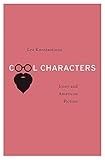Cool Characters : Irony and American Fiction / Lee Konstantinou.
Material type: TextPublisher: Cambridge, MA : Harvard University Press, [2016]Copyright date: ©2016Description: 1 online resource (384 p.)Content type:
TextPublisher: Cambridge, MA : Harvard University Press, [2016]Copyright date: ©2016Description: 1 online resource (384 p.)Content type: - 9780674967885
- 9780674969490
- 813/.540918 23
- BH301.I7 K66 2016
- online - DeGruyter
| Item type | Current library | Call number | URL | Status | Notes | Barcode | |
|---|---|---|---|---|---|---|---|
 eBook
eBook
|
Biblioteca "Angelicum" Pont. Univ. S.Tommaso d'Aquino Nuvola online | online - DeGruyter (Browse shelf(Opens below)) | Online access | Not for loan (Accesso limitato) | Accesso per gli utenti autorizzati / Access for authorized users | (dgr)9780674969490 |
Frontmatter -- Contents -- Preface -- Introduction. The Character of Irony -- Part I. Irony -- 1. The Hipster as Critic -- 2. Punk’s Positive Dystopia -- Part II. Postirony -- 3. How to Be a Believer -- 4. The Work of the Coolhunter -- Conclusion. Manic Pixie Dream Occupier -- Notes -- Acknowledgments -- Index
restricted access online access with authorization star
http://purl.org/coar/access_right/c_16ec
Lee Konstantinou examines irony in American literary and political life, showing how it migrated from the countercultural margins of the 1950s to the 1980s mainstream. Along the way, irony was absorbed into postmodern theory and ultimately become a target of recent writers who have moved beyond its limitations with a practice of “postirony.”
Mode of access: Internet via World Wide Web.
In English.
Description based on online resource; title from PDF title page (publisher's Web site, viewed 25. Jun 2024)


